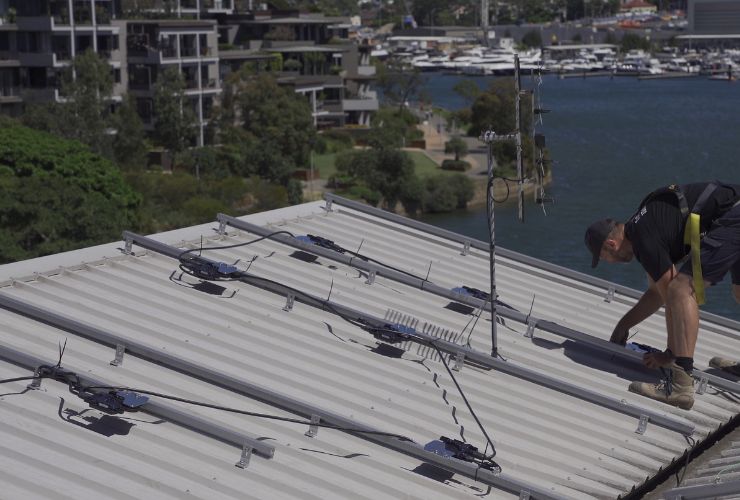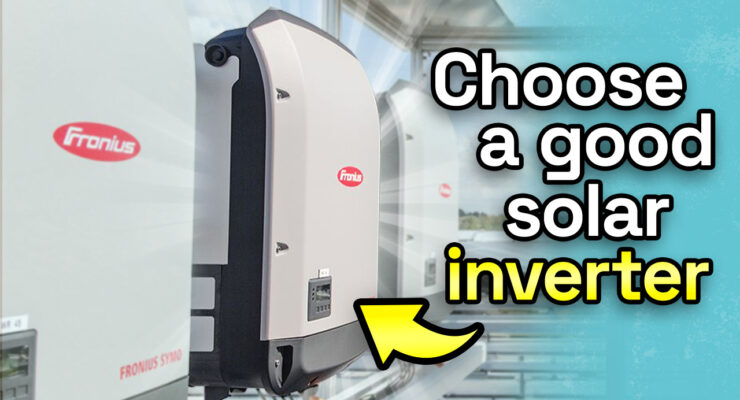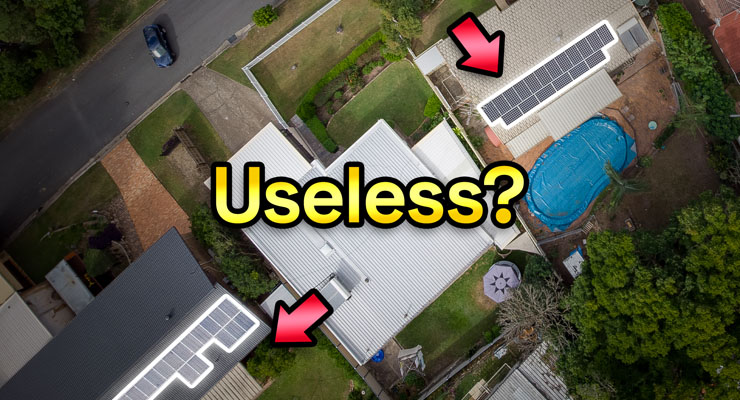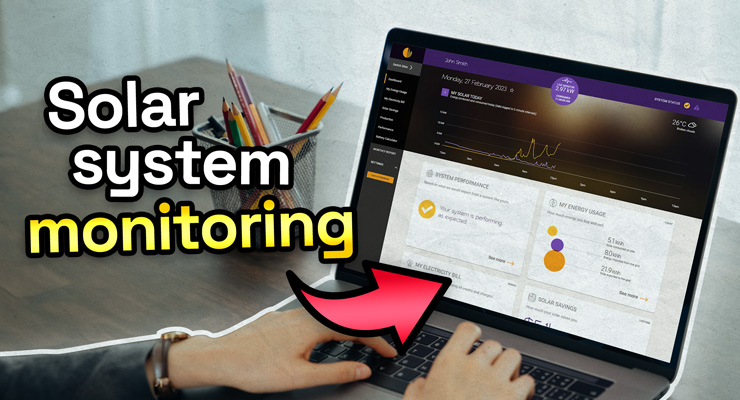Fast read
An inverter is a component that transforms solar-generated electricity into usable energy for a home. The four leading inverter technologies on the market are string inverters, microinverters, hybrid inverters, and power optimisers. So how to choose a suitable solar inverter?
When picking an inverter, keep in mind that each of these appliances has advantages and disadvantages of its own. Therefore, confirming that all available inverter solutions are AS 4777 compliant and approved by the Clean Energy Council (CEC) is crucial.
In Australia, string inverters are the most popular kind of inverter and an excellent option for locations without large roof spaces and no shading problems.
Alternatively, you can give each solar panel panel a small independent power station.
What types of solar inverters are on the market?
If you are looking at going solar or upgrading an existing system, you would have heard of a solar inverter. A solar inverter is a type of device that converts the energy produced by your solar panels into usable energy for your household.
Usually, the inverter is the most complex component of a solar power system and the first to reach the end of its lifespan. Four leading solar inverter types are available on the market, these being;
- String inverters
- Microinverters
- Hybrid Inverters
- Power Optimisers
Each type of solar inverter has its own pros and cons, so the question is, how do you search through all the different options and decide what is suitable for your specific needs?
First, no matter what type of solar inverter you want, you should ensure that all your options are Clean Energy Council (CEC) approved and meet the Australian standard AS 4777. All major brands will meet this minimum requirement. If your installer suggests an unknown, cheaper brand, make sure you identify whether they meet these criteria.

String inverter
The most common type of solar inverter in Australia is the string inverter. Well-known brands are Fronius, SMA, and Firmer from Europe and Sungrow and Goodwee from China.
This technology has been dominant and most common for decades, and when the suitable model and installation position are chosen will perform well. However, there are some downsides to this inverter technology. One of the main disadvantages is that there is a chance that the solar panels will underperform. This is because the solar panel arrays are connected in series.
This means that if one solar panel is affected by shading or is suffering from degradation, the energy production of the whole string will be affected. Simply put, if one solar panel decreases its performance by 30% because of microcracks, the entire array of panels will reduce in performance by 30%.
However, if partial shading is not an issue or you have picked top-of-the-line panels for your system and purchased quality solar products, a string inverter is an excellent choice.
Microinverter
The next most common type of solar inverter technology, considered more advanced, is the microinverter. Instead of one solar inverter for the whole system, each solar panel will have its own microinverter. Typically a bit more expensive because of the extra components and installation.
The main difference is that the other panels are unaffected if one panel slows down in performance. As a whole system, microinverter solar systems are usually a little more efficient as they can avoid shading issues. The major brand selling microinverters in Australia is Enphase, a US-headquartered manufacturer. Warranty returns on Enphase products are extremely low.

Hybrid inverters, can they be part of a good solar inverter solution?
Another type of solar inverter available for Australians is the hybrid inverter which is essentially a battery inverter and string inverter combined into one. They are typically cheaper than if you purchase an inverter for a solar system and then swap it out for a hybrid inverter when you consider getting a battery. Some brands offering this technology include SMA, Fronius, Sungrow and Goodwe.
How to choose a suitable solar inverter – Power Optimisers
The final type of solar inverter technology purchased regularly is a wall-mounted solar inverter with power optimisers.
However, you can add them to a string of panels. They perform similarly to microinverters by ensuring that when attached to a panel, shading or soiling won’t affect the output. Brands which offer these components include SolarEdge and Tigo.
So how do you choose a suitable solar inverter from this range of options?
To choose a suitable solar inverter, you must first determine what size in kW you need. The size of kW will depend on the overall size of your solar panel system.
For most installations, the solar inverter is recommended to have a maximum capacity of at least 75% of the solar array’s size. So if you would have 12 kW of panels, if you go for a string inverter needs to be at least an 8kW unit.
Few know you may get an inverter smaller in kW than your panel array. You can do this legally because it is allowed by the standards and solar design recommendations.
However, the inherent losses in solar panels imply that you’re unlikely to ever get more than 80% of the rated power out of your solar panel array.
Therefore you can oversize your inverter by up to one-third. So, for example, a 5 kW solar inverter can have 6.6 kW of panels, or a 15 kW unit can have 20 kW of panels.
What if I like the microinverter technology?
On the other hand, if you go for a 12 kW solar PV system and decide you want to use the Enphase microinverter technology and a 400W panel, then you need to have 30 microinverters, one for each panel.
Dependability, high efficiency and monitoring capability are the three most essential criteria for selecting a solar inverter solution.
Usually, your installer will recommend a solution. They recommend that brand and technology because they typically have a long-term relationship with that manufacturer/distributor.
If you need service or parts one day, they are in an excellent position to fix the issue quickly. Nothing is worse than picking an exotic brand and then, when something needs fixing, waiting for many months for spare parts. Trust me; you don’t want your solar inverter to malfunction for long periods, as you lose all your solar output.
Inverter efficiency
Solar inverter efficiency refers to how much energy the inverter can convert from DC to AC. As electricity will be lost in the conversion process, no model offers 100% efficiency.
Most inverters on the market offer 95 % efficiency and above, so make sure this is your minimum when choosing an inverter for your system.

When purchasing a solar inverter, you should check the warranty
Another important factor is warranty. Solar inverters usually come with a minimum 5-year product warranty. So when searching for different types of solar inverter options, ensure a minimum of 5 years, although many brands also offer ten years, which is becoming the standard.
Should I get a larger solar inverter in case my system produces more?
Avoid purchasing a large solar inverter than what you need because it is a waste of time and resources. Unless you intend to increase your solar system in the next 12 months, companies that supply a 10 kW inverter with 6.6 kW of panels and then say you can upgrade in the future are not giving you the whole story.
Unfortunately, panel wattage changes every 12 months, so the chance that you will be able to get more of your original panel model a few years later is slim. For that reason, at the time of purchase, get the largest system your budget and roof can afford. Then, in future years, you will have spare capacity to charge your car or use the solar to heat your water via the electric tank or a heat pump.



